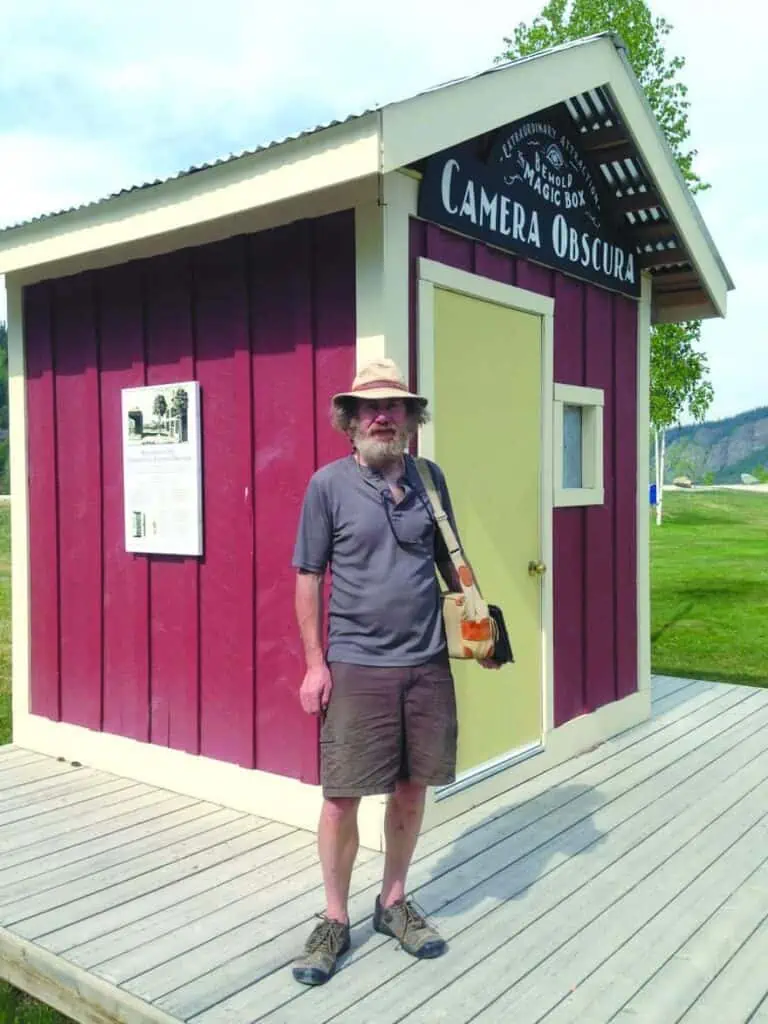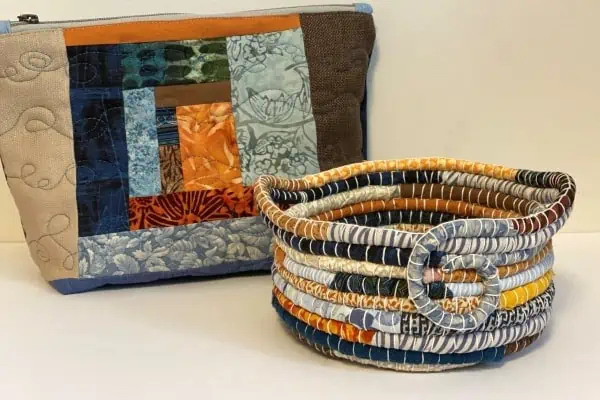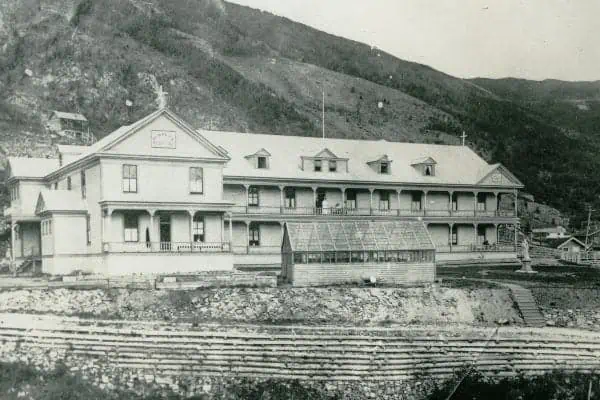
From June 17 through 21 Dawson City will host the Midnight Sun Camera Obscura Festival. This is the follow up to last year’s Dawson City Solstice Symposium, which took place from June 18 through 22.
Through much of May, Donald Lawrence, along with some students of his from Thompson Rivers University, in Kamloops, B.C. have been preparing for this event along with an international cadre of artists who have been participating in the federally funded Camera Obscura Project.
While the device itself predates the invention of the camera as we know it, it may help to think of the camera obscura as a kind of large pinhole camera — light shining though a small hole into a dark room (hence the name from the Latin) casts an inverted image on a screen.
You can use a series of mirrors and lenses to fl ip the image upright, but artists and scientist/ philosophers have known the basic trick for over 2000 years.
Dawson City has had a camera obscura building on its Waterfront Park since 2004. It was installed by the ODD Gallery on behalf of the Dawson City Arts Society (DCAS) and can be visited during the summer between 10 a.m. and 5 p.m.
Similar devices needn’t be that large or permanent. During the festival people will see tent structures with metal or wooden frames, most of which will be portable and much smaller than the DCAS model.
Lawrence is the principal instigator of the project and he sees the devices as being at the intersection of art and science, cultural and wilderness, and learning and play.
The festival’s origins go back 11 years, when Lawrence had an ODD Gallery exhibition of photographs featuring images that had been shot under water with pinhole cameras. The Dawson camera obscura was built then and DCAS began to have an interest in pinhole photography, with the assistance of Whitehorse-based photographer Mario Villeneuve.
It was then that the notion of a festival was born, though it would be six years before the Social Sciences and Humanities Research Council of Canada funded it. It will have received $296,700 over its five-year life.
During the festival, most of the artists will create projects away from the base, which is the Macaulay House artists’ residence. “There will be sites that can be visited by people throughout the festival,” Lawrence says. “And we’ll have one day when we do a kind of a public tour. Some of the artists might speak a bit about their projects during those tours. “There will be two gallery openings. One will be by students at the Confl uence Gallery in the Yukon School of Visual Arts. That exhibition will be called ‘Strange Things Done’.”
These won’t necessarily be camera obscura projects, but will be related to image projection in darkened spaces. “There will be another exhibition in the ODD Gallery and that will be works by members of the research group. There will also be some public talks.”
There will be a series of three thematically connected free workshops on the subject, and while they are linked, Lawrence says they will also be independent, so people can take in what they have time for.




